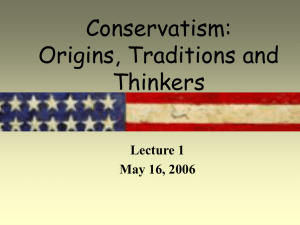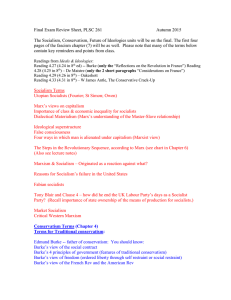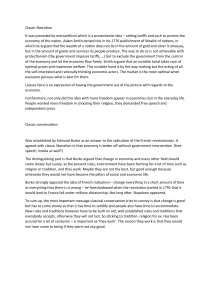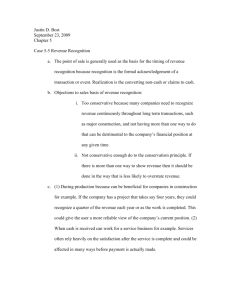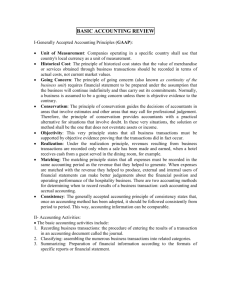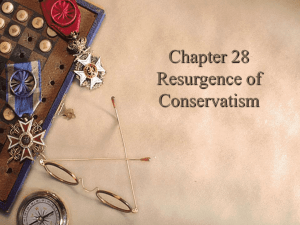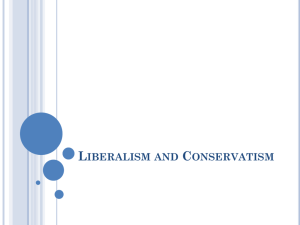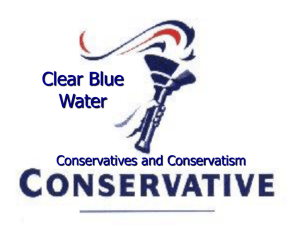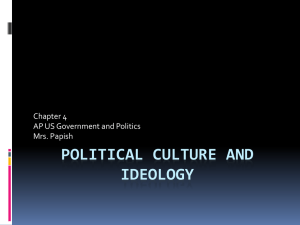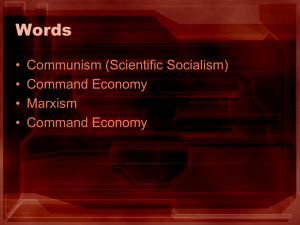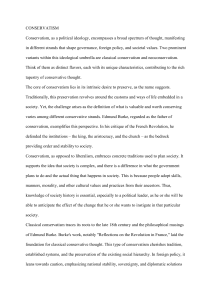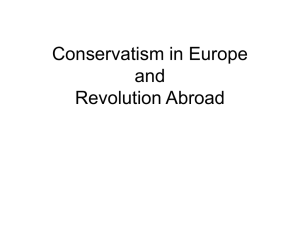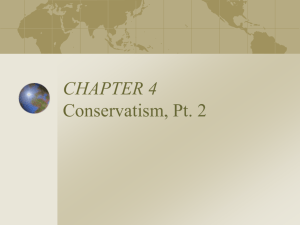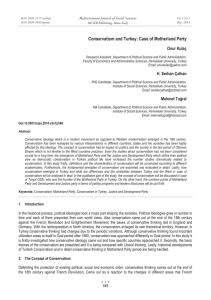Final Exam * Review Sheet The Conservatism, Socialism, and The
advertisement
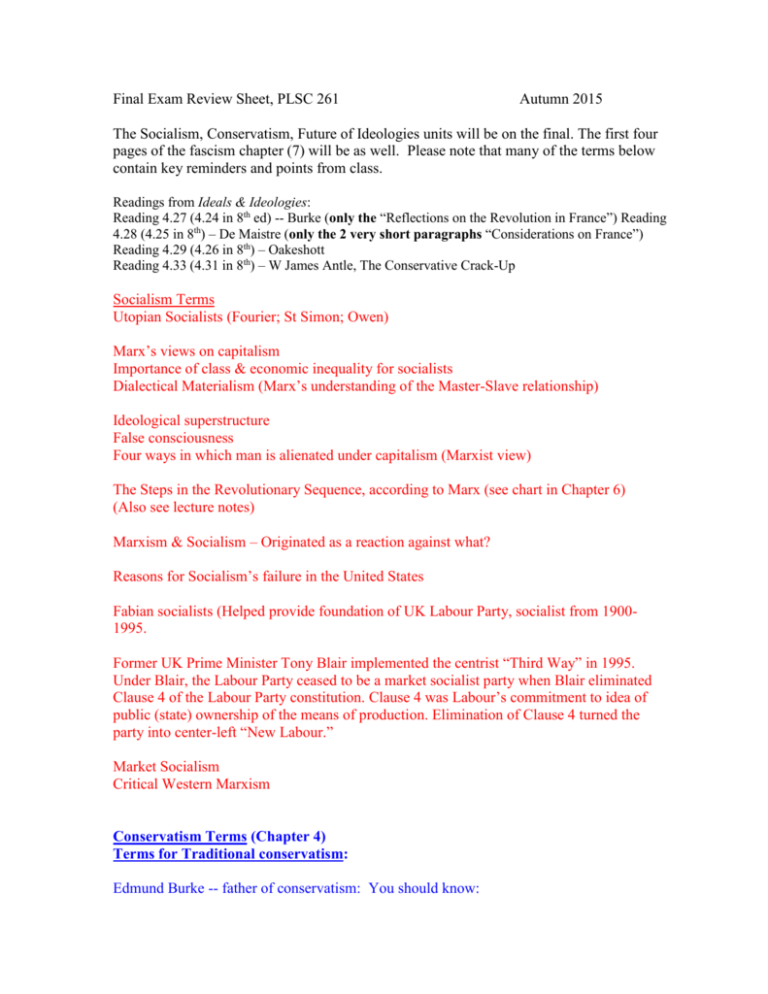
Final Exam Review Sheet, PLSC 261 Autumn 2015 The Socialism, Conservatism, Future of Ideologies units will be on the final. The first four pages of the fascism chapter (7) will be as well. Please note that many of the terms below contain key reminders and points from class. Readings from Ideals & Ideologies: Reading 4.27 (4.24 in 8th ed) -- Burke (only the “Reflections on the Revolution in France”) Reading 4.28 (4.25 in 8th) – De Maistre (only the 2 very short paragraphs “Considerations on France”) Reading 4.29 (4.26 in 8th) – Oakeshott Reading 4.33 (4.31 in 8th) – W James Antle, The Conservative Crack-Up Socialism Terms Utopian Socialists (Fourier; St Simon; Owen) Marx’s views on capitalism Importance of class & economic inequality for socialists Dialectical Materialism (Marx’s understanding of the Master-Slave relationship) Ideological superstructure False consciousness Four ways in which man is alienated under capitalism (Marxist view) The Steps in the Revolutionary Sequence, according to Marx (see chart in Chapter 6) (Also see lecture notes) Marxism & Socialism – Originated as a reaction against what? Reasons for Socialism’s failure in the United States Fabian socialists (Helped provide foundation of UK Labour Party, socialist from 19001995. Former UK Prime Minister Tony Blair implemented the centrist “Third Way” in 1995. Under Blair, the Labour Party ceased to be a market socialist party when Blair eliminated Clause 4 of the Labour Party constitution. Clause 4 was Labour’s commitment to idea of public (state) ownership of the means of production. Elimination of Clause 4 turned the party into center-left “New Labour.” Market Socialism Critical Western Marxism Conservatism Terms (Chapter 4) Terms for Traditional conservatism: Edmund Burke -- father of conservatism: You should know: Burke’s view of the social contract Burke’s 4 principles of government (features of traditional conservatism) Burke’s view of freedom (ordered liberty through self restraint or social restraint) Burke’s view of the French Rev and the American Rev "Assumption about human nature” made by Burke & traditional conservatives Tory Democracy (opponents of Whigs (Liberals) in 19th century) The conservative disposition (Oakeshott) (esp. the 5 “conclusions” on 164 bottom left) Rockefeller Republicans (= Centrist Republicans of the 1930s-1950s) ---------------------End of Traditional Conservatism-----------------------1. Individualist conservatism (Modern conservatism or free market conservatism) (Hayek, Friedman, Goldwater, Reagan, Thatcher) Understand that they are neo-classical liberals. They created “movement conservatism” as depicted in the film (The Conservatives). Individualist (modern) conservatives’ CENTRAL role in the electoral success of conservatism in the U.S. The 3 groups listed below joined their movement, as shown in the film and in lecture. 2. Social Conservativism Importance of social conservatism (sometimes populist resentment) against the cultural & social liberalism of 1960s and against welfare liberalism after 1968. Understand how they were a new kind of working & middle class conservative who rejected what they saw as too much social liberalism & welfare liberalism from the 1960s onwards. This important group (social conservatives) used to be referred to as Nixon Democrats or Reagan Democrats. 3. Neoconservatism Critique of capitalism (2 cheers for cap, not 3) Critique of the welfare state & welfare liberalism (but they used to be leftists) Hawkish position on foreign policy Importance for the conservative movement 4. The Religious Right after 1973 Reacted against Roe v Wade which legalized abortion in 1973 The Religious Right as the 4th component of the “Reagan-Rove Coalition” Other themes: -- Anti-Communism and private property = Common theme of most conservatives -- The conservative “movement” in the U.S. (Reagan-Rove Coalition) (pp. 112 – 120) What was the Core?? What were the 4 components? (See above #1, #2, #3, #4). -- Problems with the Reagan-Rove Coalition after 2012 Election --Michael Oakeshott Reading Highlights & Key Passages (Wed, Dec 2) Beginning of Chapter 7 (Fascism) -- First 4 pages only (will be covered on Dec 4) Enlightenment Liberalism – 5 Main Features (Powerpoint & beginning of Chap 7) Counter-Enlightenment Thought – Reactionary Ideology (Ppt & beginning of Chap 7) Joesph de Maistre’s Rejection of Enlightenment in 1796 (Reading 4.25/4.28) Continuation of Counter-Enlightenment Thought Today (See Powerpoint slide or see pp. 221 bottom – 223 in the 9th ed (which is pp. 212 - 214 in the 8th ed). The Future of Ideologies (Chapter 11) (will be covered Dec 4) Durability of Religion & Nationalism Today (pp. 318 – 322 in 9th ed) (pp. 303-307 in 8th ed) End of Ideology arguments associated with Daniel Bell, Francis Fukuyama, & Karl Marx. Author’s rejection of End of Ideology arguments (pp. 329 – 331 in the 9th ed, which are the last 3 pages in the closing chapter of the text) (this is pp. 313 – 315 in the 8th ed).
